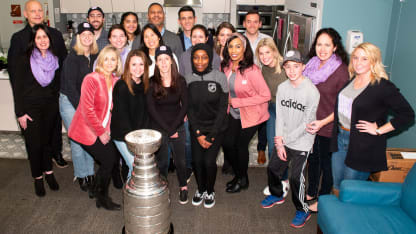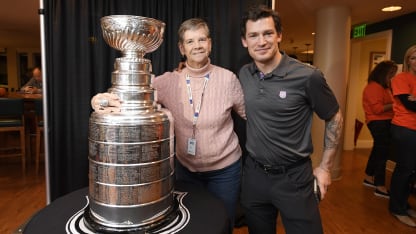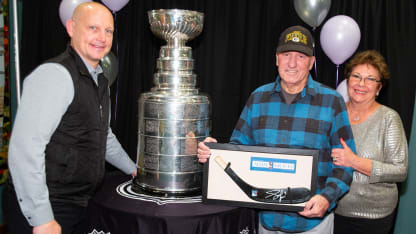"There's not too many things more powerful in hockey than the presence of the Stanley Cup, whether it's the hard core, the casual [fan], it's just such a symbol of happiness," said Graves, who won the Cup with the Edmonton Oilers in 1990 and the New York Rangers in 1994. "To be able to bring it to the Hope Lodge and to see all of these incredibly strong people that are battling cancer, I know, speaking with many of them, that it meant a lot that the Stanley Cup was brought to the Hope Lodge."
Graves said he was able to spend a couple of hours on Thursday night sitting with the residents, talking with them, understanding their experience and the impact that the Hope Lodge has made on them, "just listening to what Hope Lodge means to them and their families and how it's one of those incredible opportunities when you need it the most."
"For most everybody, there is a personal connection, having gone through [it], knowing somebody close who has dealt with cancer," Ference said. "It's not hard for people to relate to what that is - missing work, having to come get treatment, the physical and emotional trauma that people go through.
"I think sometimes people think that, oh, money just goes to research to find a cure. But I think sometimes you need to be reminded that there are the hidden expenses and costs of being out of work for six weeks and having to come to a city that's a few hundred miles away to get your treatment. Investing in somebody's quality of life as they're going through something like that, to put them in a place where there's other people going through the same thing and they have a community built in, what's the value in that?"




















